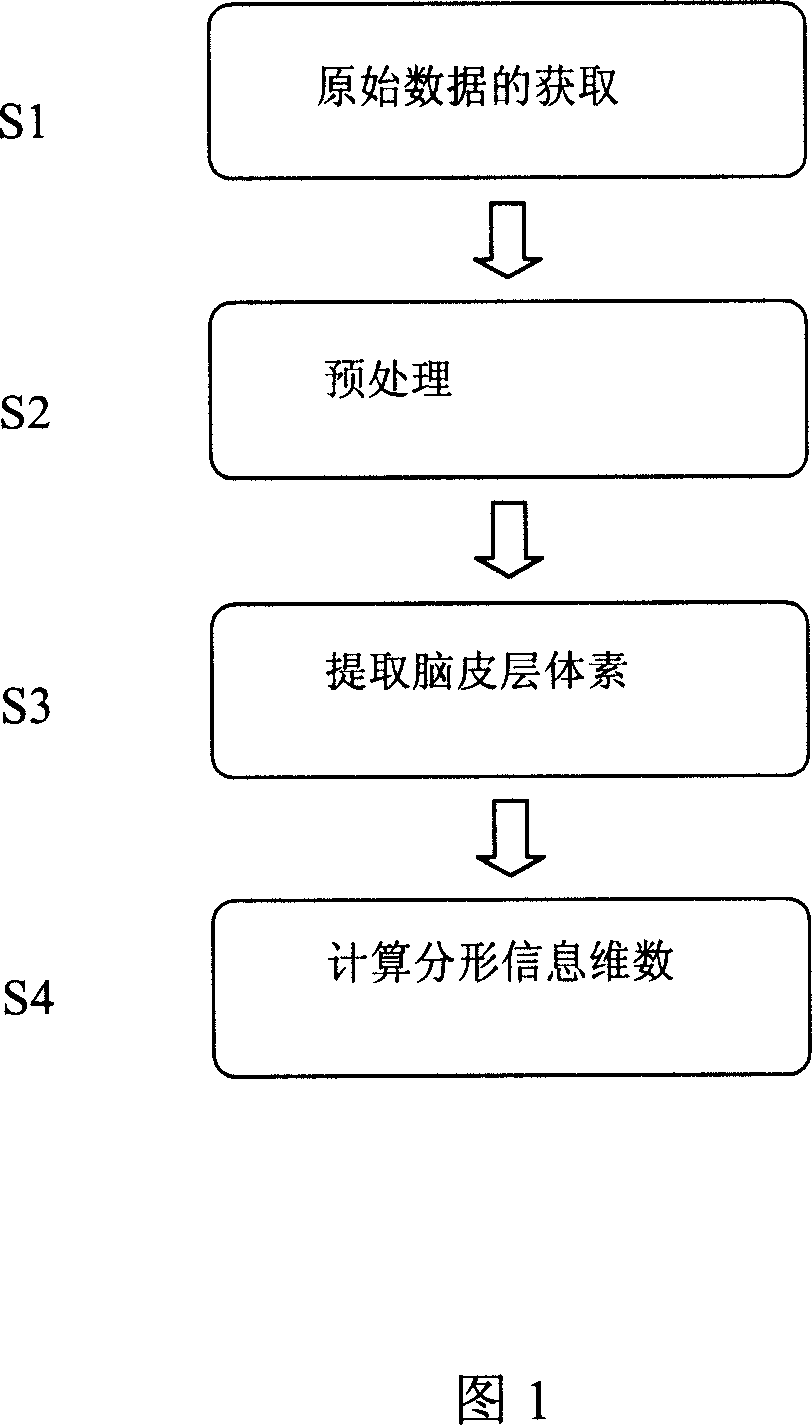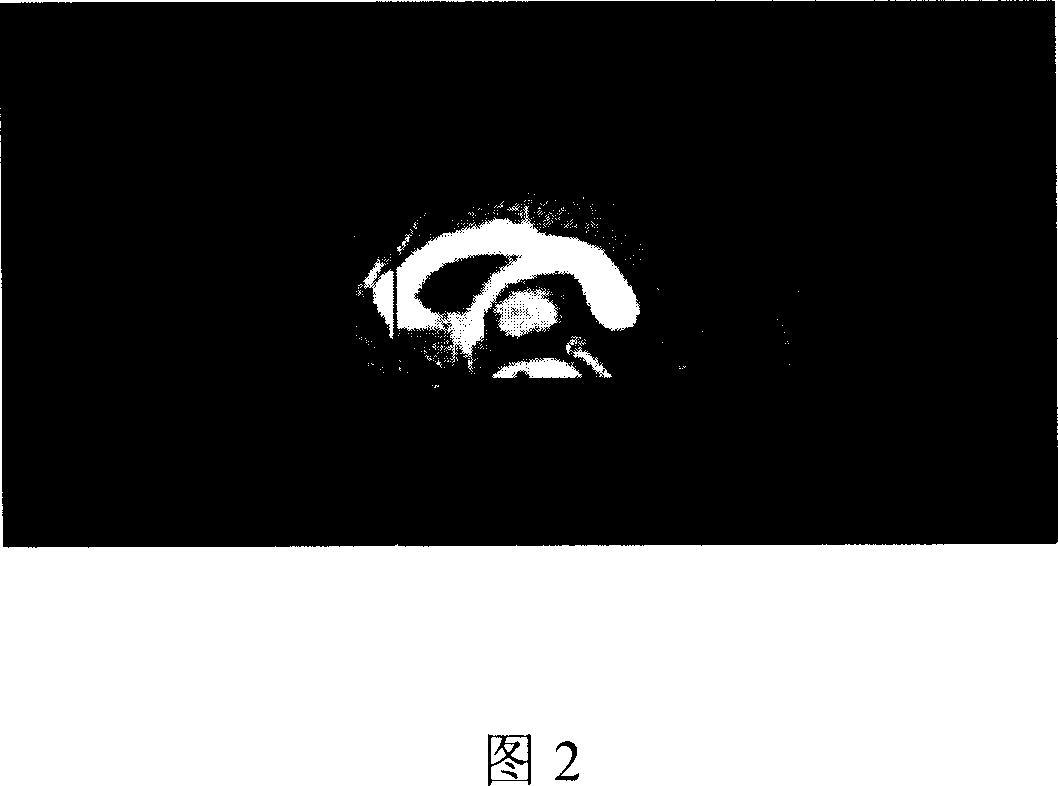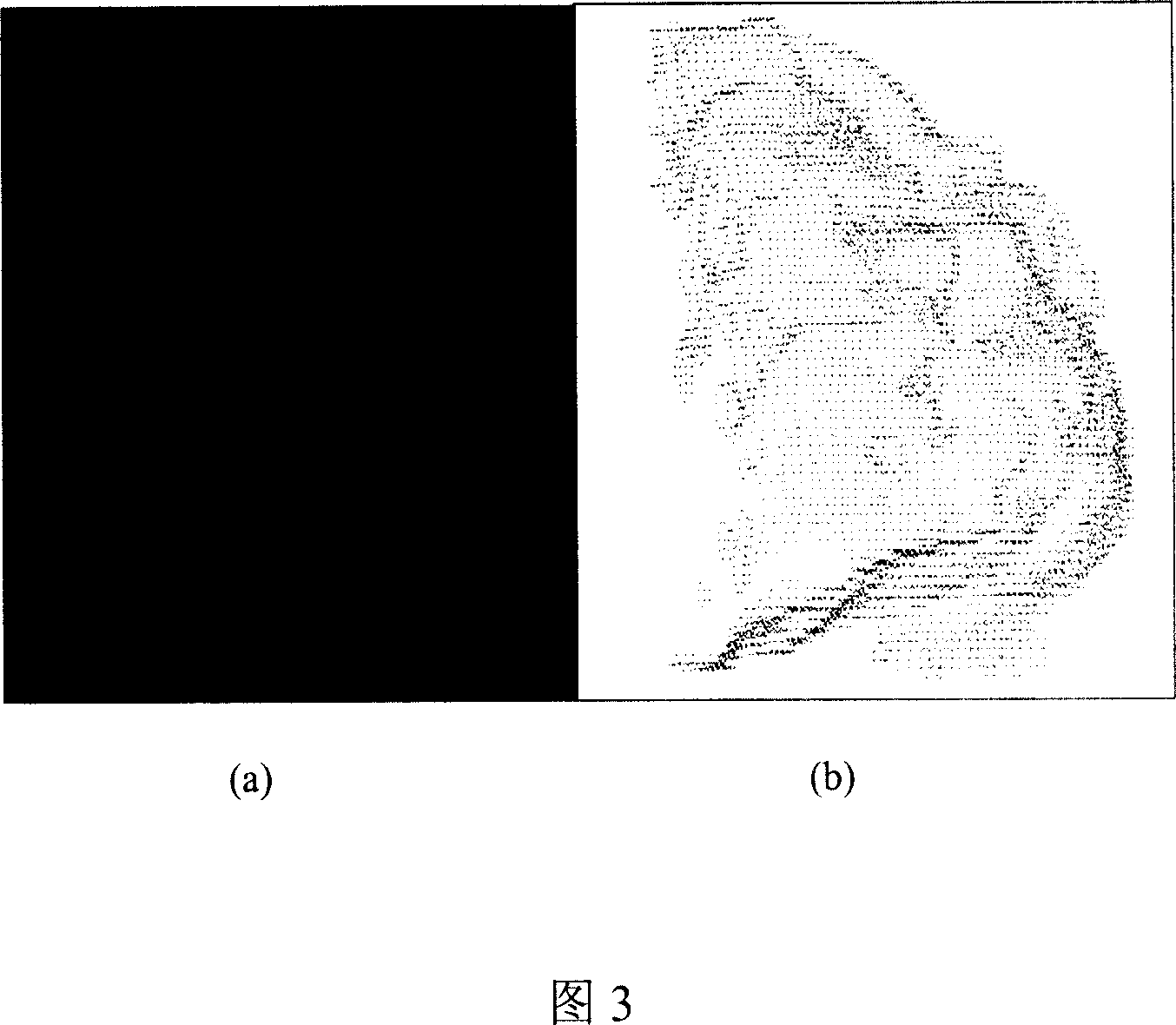Quantitative analysis method for cerebral cortex complexity during treating three-D magnetoencepha-resonance data
A cerebral cortical and complex technology, applied in image data processing, image data processing, diagnostic recording/measurement, etc., can solve problems such as large influence of human factors, unfavorable general promotion, and lack of cerebral sulci.
- Summary
- Abstract
- Description
- Claims
- Application Information
AI Technical Summary
Problems solved by technology
Method used
Image
Examples
Embodiment Construction
[0014] As shown in Figure 1,
[0015] Step 1 (S1), acquisition of brain structure MRI data: acquisition of brain functional structure MRI data is completed on an MRI scanner capable of forming T1 or T2 weighted structural images. There are no special requirements for the specific parameters of the imaging, and the spatial resolution is generally a few millimeters, such as 1×1mm 2 . , There are no special requirements for the cooperation of the subjects, only the subjects need to be told to close their eyes quietly and keep their heads as still as possible.
[0016] Step 2 (S2), preprocessing: After the data collection is completed, conventional preprocessing is generally required, including head movement correction, spatial standardization, etc., but these processes are determined according to the purpose of use and are not necessary. After these basic processes are completed, the cranial part, as well as the cerebellum, brainstem, etc., are removed, and the brain is divided...
PUM
 Login to View More
Login to View More Abstract
Description
Claims
Application Information
 Login to View More
Login to View More - R&D
- Intellectual Property
- Life Sciences
- Materials
- Tech Scout
- Unparalleled Data Quality
- Higher Quality Content
- 60% Fewer Hallucinations
Browse by: Latest US Patents, China's latest patents, Technical Efficacy Thesaurus, Application Domain, Technology Topic, Popular Technical Reports.
© 2025 PatSnap. All rights reserved.Legal|Privacy policy|Modern Slavery Act Transparency Statement|Sitemap|About US| Contact US: help@patsnap.com



